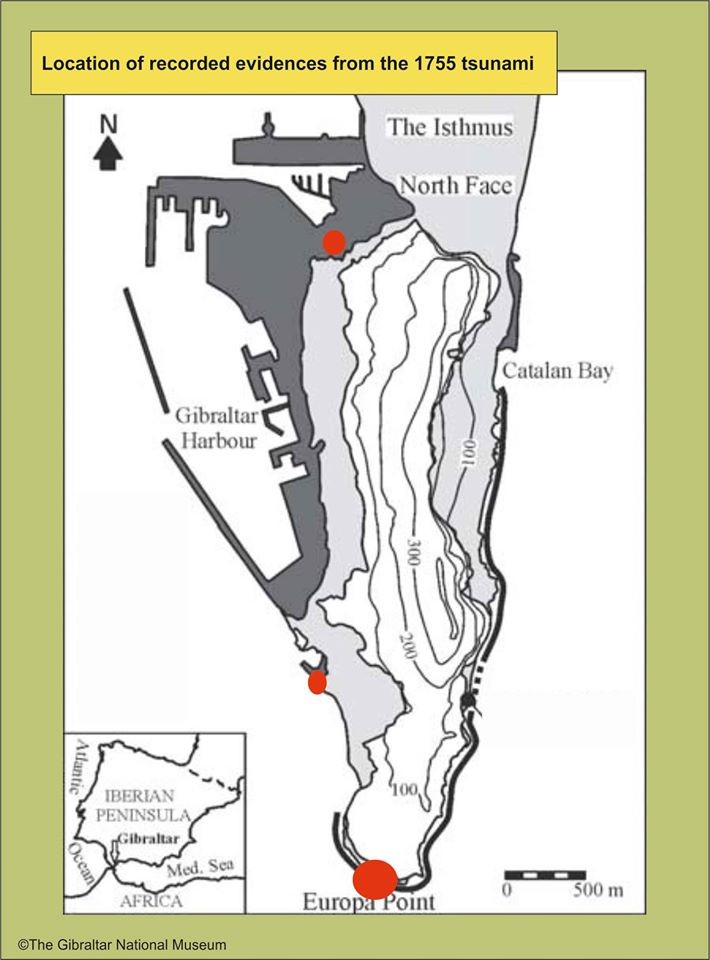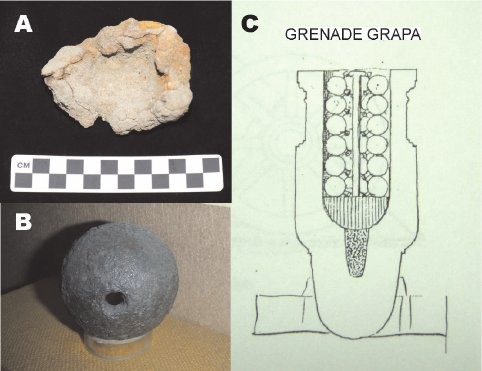Geological evidence of the Lisbon earthquake and tsunami
Geological evidence of the Lisbon earthquake and tsunami
The Lisbon earthquake of 1755 and its subsequent tsunami were considered one of the most devastating natural catastrophes to affect Europe in recent history, and it left its mark in the memories of the people of the Iberian Peninsula. The Lisbon coast suffered the greatest impact, with 900 deaths in the Portuguese capital and the destruction of some towns, but its force was also felt in the areas around the Gulf of Cadiz and the Atlantic coast of Morocco. The tsunami’s magnitude was such that it affected places as far as Scotland and even Caribbean islands.
In his ‘History of the Herculean Straits’ published in 1771, Thomas James recounts its effects in Gibraltar: “This earthquake, perceived at Gibraltar, was in the forenoon on the first of November one thousand seven hundred and fifty-five, it began with a trembling which lasted half a minute, then a violent shock, and went off gradually as it began; the sea rose every fifteen minutes six feet eight inches, and fell so low that boats and all the small craft near the shore were left aground, as were numbers of small fish; and on the third, fourth and fifth of the said month, small shocks were felt”.
Tsunamis generally move towards land collecting sediments as a result of drag and erosion of the seabed, depositing these in coastal or even inland areas. The location and analysis of these sediments demonstrate the size and extent of tsunami waves.
Evidence of the tsunami generated by the Lisbon earthquake has been detected in three areas in Gibraltar: Vladi’s Reef, Rosia Bay and the coastal lagoon known as the Inundation (locally known as ‘Laguna’). At Vladi’s Reef, 22 metres below sea level today, seabed deposits have been located that show evidence of shallow water and intertidal fauna. Similar deposits have also been found in several cracks in the cliffs around Rosia Bay where sediments, which had to have been carried by strong currents of water, became trapped. The analyses of these deposits and their dates have directly related them to this event.
Geotechnical surveys carried out in the area of the Inundation have also yielded very interesting data in this respect. The analysis of the cores together with the historical cartography has allowed geologists to describe the development of this, once coastal, lagoon over time. Geologists detected a strong erosion of the lagoon’s sediments and a rapid deposition of beach sand from surrounding areas, which related to a tsunami event. The most impressive thing was that this event could even be dated through an interesting find which lay just above the tsunami level in the core – a projectile fragment which was identified as part of a 6-pounder hand grenade. This kind of grenade could be thrown by hand by a grenadier or fired from a mortar as grapeshot.
By analysing the location of Gibraltar’s 18th century defensive and offensive lines of warfare as well as the likelihood of this kind of grenade being used there, the conclusion reached is that this hand grenade would have been used during the Great Siege of Gibraltar (1779-83), just after the Lisbon earthquake’s tsunami. With this information, together with other direct dating techniques, this hand grenade precisely dates the geological evidence of the tsunami at the Inundation.

Location of recorded evidence from the 1755 tsunami:
The Inundation;Rosia Bay; and Vladi's Reef

A: Grenade fragment found above the tsunami level in the core taken from the Inundation.
B: Photograph of a 6-pounder grenade from the Great Siege (1779-83) in the Gibraltar National Museum.
C: Mortar prepared to fire grenade grapeshot, (reproduced from Rollo, 1989).
Published: May 01, 2020
Other similar VM - Geology
18-20 Bomb House Lane
PO Box 939,
Gibraltar
